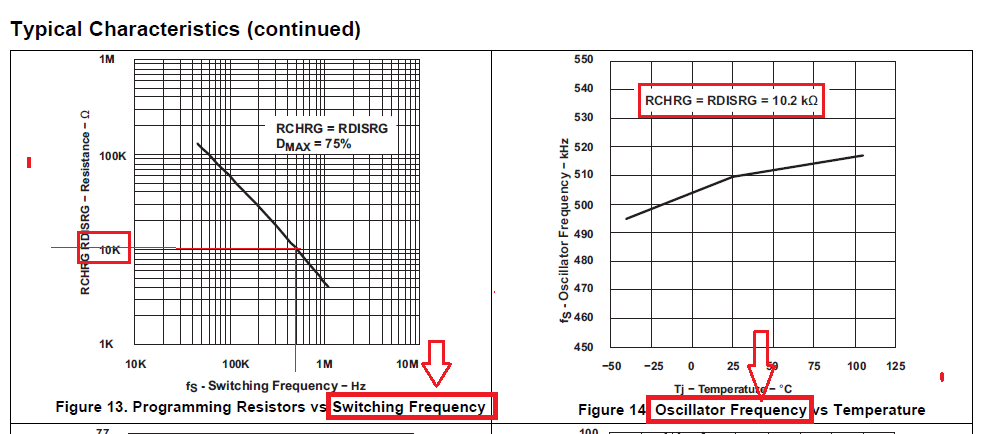Other Parts Discussed in Thread: LM5032
I’m writing for the following questions.
(1) I would like to apply UCC28220 in interleaved 2-FET forward converters while Dmax < 0.5 for each channel.
à Can Dmax < 0.5 (e.g. 0.48) be achieved by setting an appropriate resistor value for Pin=8/9?
à How to achieve 70kHz switching frequency for each channel while Dmax=0.48?
(2) Will there be other TI controller IC specially for 2-FET forward interleave purpose? (OR recommended controller IC)
Figure 13 refers to switching frequency while Figure 14 refers to oscillator frequency.
However, when RCHRG=RDISRG=10.2k, frequency from Figure 13 (i.e. ~500kHz) and frequency from Figure 14 (~500kHz) should refer to the same frequency.
Please clarify the following questions.
à Figure 13 refers to switching frequency of each channels or oscillator frequency?
à Figure 14 refers to switching frequency of each channels or oscillator frequency?
BR,
Gary


